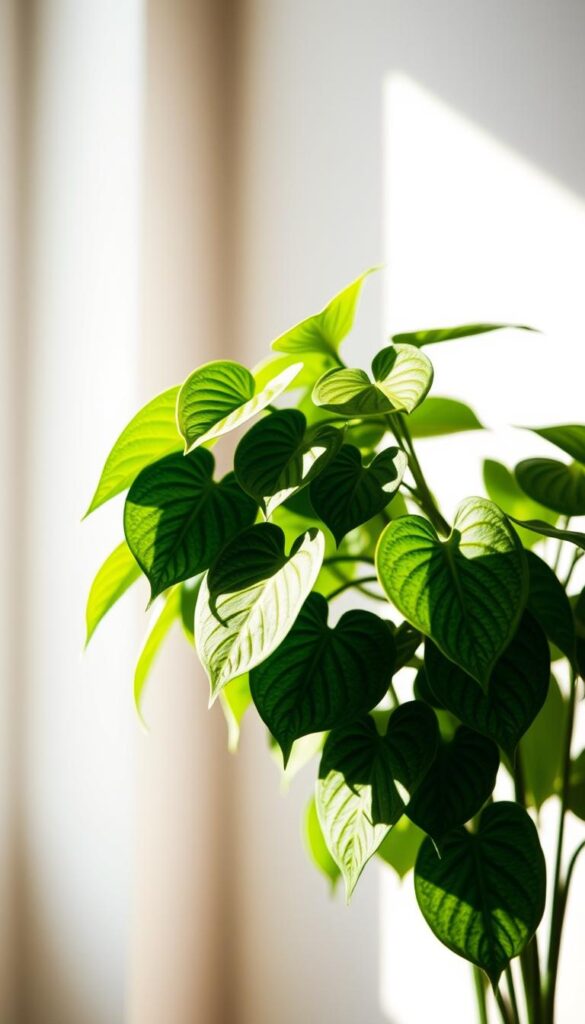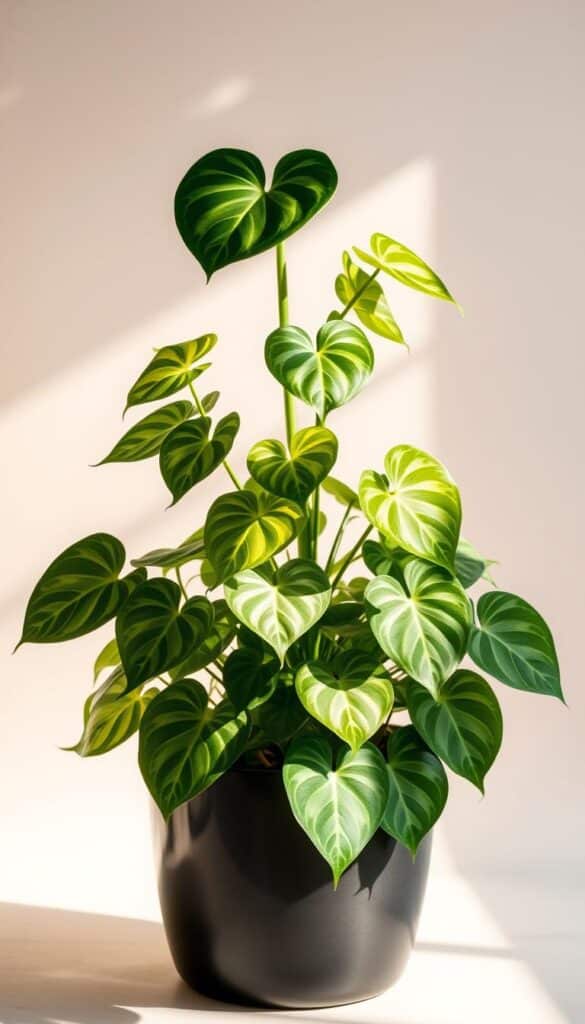Meet my Manjula Pothos, a stunning houseplant that has brought beauty and life to my home. Over the years, I’ve learned the ins and outs of nurturing this unique variety, and I’m excited to share my journey with you. Whether you’re a seasoned plant parent or just starting out, this guide is here to help you give your Manjula Pothos the love it deserves.
Known for its striking variegation and slow growth, the Manjula Pothos is a patented variety that stands out among other houseplants. It thrives with careful attention to watering, light, and soil conditions. In this guide, I’ll cover everything from its unique traits to essential care practices, ensuring your plant stays healthy and vibrant.
Based on both my personal experience and trusted online sources, this guide offers a balanced approach to caring for your Manjula Pothos. We’ll explore topics like proper soil mixes, watering methods, and optimal light levels, setting you up for success. Let’s dive in and give your plant the care it needs to flourish!
Discovering the Unique Traits of Manjula Pothos
Manjula Pothos captivates plant enthusiasts with its striking appearance and intriguing history. This plant is a cross between the N’Joy and Marble Queen varieties, resulting in a unique blend of traits that set it apart from other houseplants.
Variegation Patterns and Leaf Beauty
The variegation on Manjula Pothos is truly one-of-a-kind. Its leaves feature a mix of cream, green, and subtle grey-blue tones, creating a marbled effect that makes each leaf a natural work of art. The wavy texture of the leaves adds to their visual appeal, giving the plant a dynamic look that draws the eye.
Growth Characteristics and Origin Story
Manjula Pothos is known for its slow, trailing growth habit. This slower growth is due to its limited chlorophyll content, which affects how it develops. Compared to other popular Pothos varieties like N’Joy and Marble Queen, Manjula Pothos has a more delicate and refined appearance. Developed at the University of Florida, this patented variety stands out for its unique characteristics and adaptability as a houseplant.
| Characteristic | Manjula Pothos | N’Joy Pothos | Marble Queen Pothos |
|---|---|---|---|
| Variegation | Cream, green, grey-blue | White, green | White, green |
| Growth Rate | Slow | Medium | Fast |
| Leaf Texture | Wavy | Slightly wavy | Straight |
Understanding these unique traits is essential for providing the right care and ensuring your Manjula Pothos thrives. Its distinctive features make it a standout addition to any indoor space, offering both beauty and a connection to its fascinating origins.
Optimal Lighting Strategies for Your Manjula Pothos
Lighting plays a crucial role in the health and beauty of your Manjula Pothos. I’ve found that placing my plant near an east or west-facing window provides the perfect balance of bright, indirect light. This setup helps maintain the vibrant variegation and prevents leaf damage from harsh direct sunlight.
Finding the Perfect Light Position
Positioning your plant correctly is essential. East-facing windows are ideal because they offer gentle morning light, while west-facing windows provide softer afternoon light. Avoid south-facing windows, especially in the Northern Hemisphere, as they can be too intense and cause leaf scorch. North-facing windows are a good option if you prefer lower light levels, but be aware that this might reduce the plant’s variegation over time.
Adjusting for Seasonal Changes
As seasons change, so should your plant’s lighting setup. During summer, when sunlight is stronger, consider using sheer curtains to diffuse the light and prevent scorching. In winter, when natural light is scarce, you might need to move your plant closer to a window or supplement with grow lights. Monitoring your plant’s response and adjusting its position accordingly will ensure it remains healthy and thriving year-round.

By paying attention to these lighting strategies, you can create an environment where your Manjula Pothos flourishes, maintaining its stunning appearance and vitality.
Watering Essentials and Techniques
Watering your Manjula Pothos requires a delicate balance to ensure it stays healthy and thrives. Overwatering can be detrimental, while underwatering can cause stress. Finding the right routine is key.
Identifying the Right Watering Frequency
I check the soil moisture by inserting my finger into the top 1-2 inches of soil. If it feels dry, it’s time to water. I use room-temperature water to prevent shocking the roots, which can lead to root rot. This method has worked well for my plant.
Proper drainage is crucial. I add perlite or orchid bark to the potting mix to ensure water drains well and roots stay healthy. This helps prevent the soil from becoming waterlogged.
Avoiding Overwatering and Root Rot
Signs of overwatering include yellowing leaves and droopy stems. Underwatering can cause leaves to curl or become crispy. I’ve learned to watch for these signs and adjust my watering schedule accordingly.
By maintaining a balance, I ensure my plant’s roots stay healthy and strong, avoiding issues like root rot. This balance is essential for the plant’s vitality and beauty.
Humidity, Temperature, and Your Plant Environment
Maintaining the right indoor climate is crucial for your plant’s health. Consistent humidity and temperature levels help prevent stress and protect its delicate foliage.
Creating a Consistent Indoor Climate
I use a hygrometer to monitor humidity levels, ensuring they stay between 60-70%. This range supports healthy growth and prevents issues like mold. To maintain humidity, I either relocate the plant to a more humid area or use a humidifier, especially during dry months.
Managing Seasonal Fluctuations
Seasonal changes require adjustments. In winter, I move my plant away from drafts and heaters to avoid stress. During summer, I ensure the temperature stays below 85°F to prevent leaf scorch. These consistent conditions promote robust growth and resilience.
By keeping the environment steady, my plant stays vibrant and healthy, thriving in its indoor space.
manjula pothos care guide expert tips and more
As I continue to nurture my Manjula Pothos, I’ve learned that a few expert strategies can make all the difference. These practices go beyond the basics, ensuring my plant stays vibrant and healthy over time.
Expert Advice and Proven Best Practices
One of my top tips is regular pruning. Trimming back overgrown vines encourages bushy growth and maintains the plant’s shape. I also use a product called SB Plant Invigorator, which helps prevent pests and keeps the leaves shiny and robust.
Preventive Care Measures for Lasting Health
Preventive care is essential. I quarantine new plants for a few weeks to ensure they’re pest-free before introducing them to my collection. Fertilizing during the growing season gives my Manjula Pothos the nutrients it needs to thrive. Small adjustments, like moving the plant away from direct sunlight during peak hours, prevent leaf scorch and promote balanced growth.

By following these expert-approved methods, my Manjula Pothos remains a stunning, healthy addition to my home. Regular observation and timely adjustments ensure it continues to flourish, offering both beauty and fresh air to my space.
Soil, Potting Mix, and Repotting Insights
When it comes to nurturing your plant, the right soil mix is just as important as water and light. I’ve found that a well-draining potting mix is essential to prevent water retention and root rot.
Choosing the Right Soil Mix for Drainage
My go-to mix combines peat-free compost, orchid bark, perlite, and horticultural grit. This blend ensures excellent drainage and aeration, keeping the roots healthy and strong. Proper drainage is key to preventing root rot and ensuring your plant thrives.
Recognizing When to Repot
I repot my plant once it has doubled in size or every year. To check if it’s time, I gently remove the plant from its pot and inspect the roots. If the roots are circling or the soil is packed tightly, it’s time for a slightly larger pot. This process not only gives the roots more room to grow but also replenishes the soil with fresh nutrients.
- Use a pot with drainage holes to prevent waterlogged soil.
- Gently handle the roots to avoid damage during repotting.
- Choose a pot that’s only slightly larger to avoid too much empty space.
By selecting the right soil mix and repotting at the right time, you’ll create a healthy environment for your plant to grow and flourish.
Pest Management and Leaf Health
Keeping your plant free from pests is essential for its health. Regular inspections and preventive measures can help avoid infestations.
Preventing Common Pests
I check both sides of the leaves weekly for signs of pests like spider mites or mealybugs. Proper humidity and good air circulation are key to preventing these issues. I use a hygrometer to keep humidity between 60-70% and ensure good airflow around the plant.
Effective Treatment Options
If I spot any pests, I treat the plant with neem oil or insecticidal soap. These natural remedies are gentle yet effective. I also quarantine new plants for two weeks before adding them to my collection to prevent cross-contamination.
Regular leaf cleaning and pruning also help maintain health. By staying vigilant and taking proactive steps, I keep my plant thriving and pest-free.
Advanced Propagation Techniques and DIY Care
Taking your plant propagation to the next level can be both rewarding and cost-effective. With the right techniques, you can expand your collection and share plants with friends. Let’s dive into advanced methods for propagating your Manjula Pothos and explore DIY care recipes to enhance its growth.
Step-by-Step Propagation Guide
Propagating your Manjula Pothos is a straightforward process that requires attention to detail. Here’s how to do it:
- Choose a healthy stem with at least two nodes.
- Cut a 6-8 inch section just above a node using clean scissors.
- Remove lower leaves, leaving only a few at the top.
- Dip the cut end in rooting hormone for best results.
- Place the cutting in water, ensuring the node is submerged.
- After 1-2 weeks, when roots develop, transfer to soil.
Using rooting hormone can significantly improve success rates, and keeping the cutting in bright, indirect light will promote healthy growth.
DIY Fertilizer and Care Recipes
Creating your own fertilizer can be simple and effective. Try this DIY recipe:
- Combine 2 tablespoons of worm castings, 1 tablespoon of bone meal, and 1 teaspoon of kelp powder.
- Mix well and store in an airtight container.
- Use 1 teaspoon per gallon of water during the growing season (spring and summer).
This organic blend provides essential nutrients for robust growth. Regular propagation also reinforces good care routines, ensuring your plants thrive in their new environments.
By following these advanced techniques and DIY recipes, you can enjoy a lush, vibrant Manjula Pothos that brings life and beauty to your home.
Wrapping Up Your Plant Care Journey
As you wrap up your plant care journey, remember that every detail matters. Proper watering, lighting, and soil choices are the foundation of a thriving Manjula Pothos. By maintaining consistent humidity levels and creating a welcoming environment, you’ll nurture a vibrant addition to your home.
Experiment with care routines and observe your plant’s unique signs. A little extra attention goes a long way in ensuring lasting health and beauty. The reward of watching your Manjula Pothos flourish is truly fulfilling.
Join a community of plant lovers, share your experiences, and celebrate the joy of growing your beloved houseplant. Happy planting!
